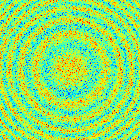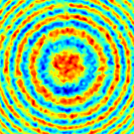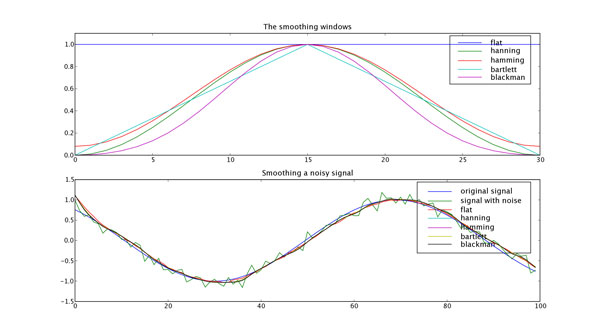一维信号平滑¶
| 日期 | 2017-07-13 (最后修改), 2006-10-31 (创建) |
|---|
此方法基于将缩放后的窗口与信号进行卷积。信号通过在两端引入反射的窗口长度副本来准备,以便在输出信号的开头和结尾部分最小化边界效应。
代码¶
In [ ]
import numpy
def smooth(x,window_len=11,window='hanning'):
"""smooth the data using a window with requested size.
This method is based on the convolution of a scaled window with the signal.
The signal is prepared by introducing reflected copies of the signal
(with the window size) in both ends so that transient parts are minimized
in the begining and end part of the output signal.
input:
x: the input signal
window_len: the dimension of the smoothing window; should be an odd integer
window: the type of window from 'flat', 'hanning', 'hamming', 'bartlett', 'blackman'
flat window will produce a moving average smoothing.
output:
the smoothed signal
example:
t=linspace(-2,2,0.1)
x=sin(t)+randn(len(t))*0.1
y=smooth(x)
see also:
numpy.hanning, numpy.hamming, numpy.bartlett, numpy.blackman, numpy.convolve
scipy.signal.lfilter
TODO: the window parameter could be the window itself if an array instead of a string
NOTE: length(output) != length(input), to correct this: return y[(window_len/2-1):-(window_len/2)] instead of just y.
"""
if x.ndim != 1:
raise ValueError, "smooth only accepts 1 dimension arrays."
if x.size < window_len:
raise ValueError, "Input vector needs to be bigger than window size."
if window_len<3:
return x
if not window in ['flat', 'hanning', 'hamming', 'bartlett', 'blackman']:
raise ValueError, "Window is on of 'flat', 'hanning', 'hamming', 'bartlett', 'blackman'"
s=numpy.r_[x[window_len-1:0:-1],x,x[-2:-window_len-1:-1]]
#print(len(s))
if window == 'flat': #moving average
w=numpy.ones(window_len,'d')
else:
w=eval('numpy.'+window+'(window_len)')
y=numpy.convolve(w/w.sum(),s,mode='valid')
return y
from numpy import *
from pylab import *
def smooth_demo():
t=linspace(-4,4,100)
x=sin(t)
xn=x+randn(len(t))*0.1
y=smooth(x)
ws=31
subplot(211)
plot(ones(ws))
windows=['flat', 'hanning', 'hamming', 'bartlett', 'blackman']
hold(True)
for w in windows[1:]:
eval('plot('+w+'(ws) )')
axis([0,30,0,1.1])
legend(windows)
title("The smoothing windows")
subplot(212)
plot(x)
plot(xn)
for w in windows:
plot(smooth(xn,10,w))
l=['original signal', 'signal with noise']
l.extend(windows)
legend(l)
title("Smoothing a noisy signal")
show()
if __name__=='__main__':
smooth_demo()
In [ ]
def gauss_kern(size, sizey=None):
""" Returns a normalized 2D gauss kernel array for convolutions """
size = int(size)
if not sizey:
sizey = size
else:
sizey = int(sizey)
x, y = mgrid[-size:size+1, -sizey:sizey+1]
g = exp(-(x**2/float(size)+y**2/float(sizey)))
return g / g.sum()
def blur_image(im, n, ny=None) :
""" blurs the image by convolving with a gaussian kernel of typical
size n. The optional keyword argument ny allows for a different
size in the y direction.
"""
g = gauss_kern(n, sizey=ny)
improc = signal.convolve(im,g, mode='valid')
return(improc)
示例¶
In [ ]
from scipy import *
X, Y = mgrid[-70:70, -70:70]
Z = cos((X**2+Y**2)/200.)+ random.normal(size=X.shape)

In [ ]
blur_image(Z, 3)

附件 cookb_signalsmooth.py 包含此脚本的版本,其中包含一些样式清理。
另请参阅¶
["Cookbook/FiltFilt"] 可用于通过低通滤波平滑数据,并且不会延迟信号(与此平滑器不同)。
部分作者:Unknown[1], GaelVaroquaux, Unknown[142], Unknown[143], Unknown[144], Unknown[145], Unknown[146], Unknown[147], WesTurner, Christian Gagnon, clecocel
附件
